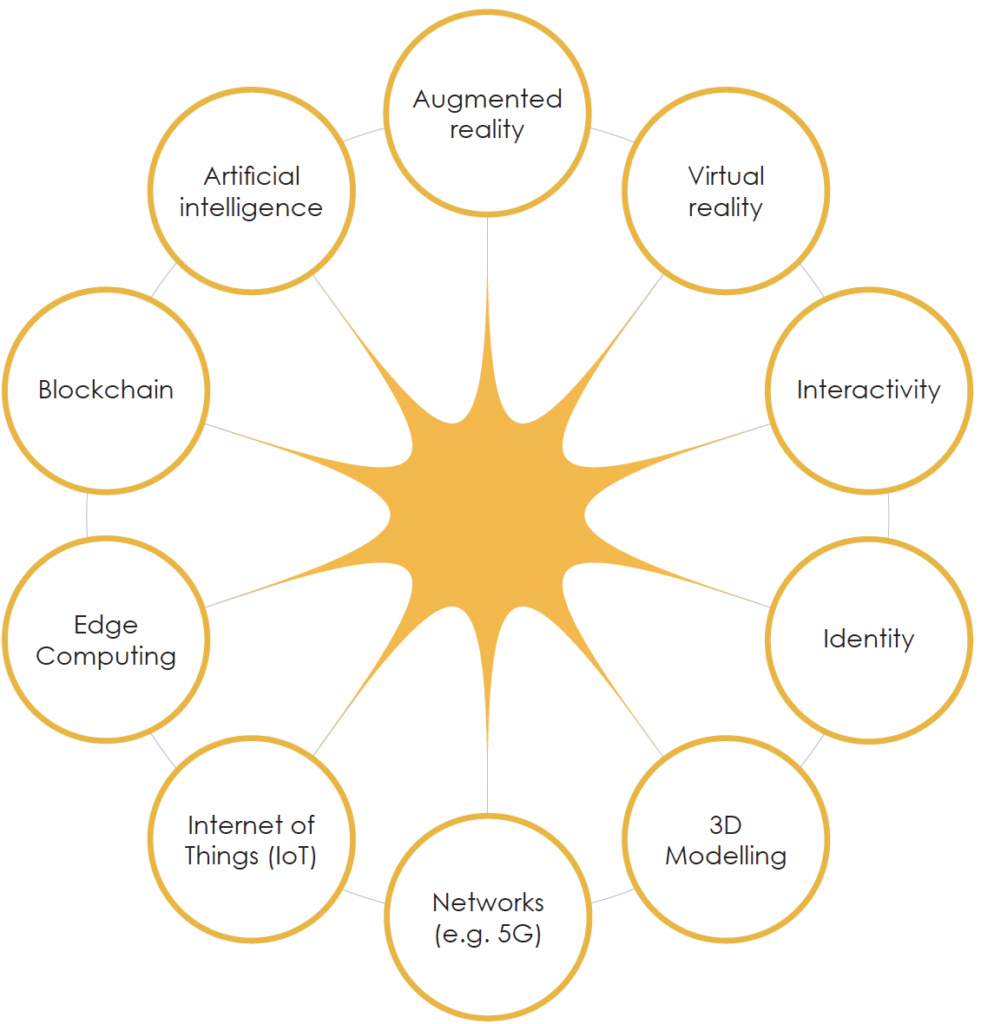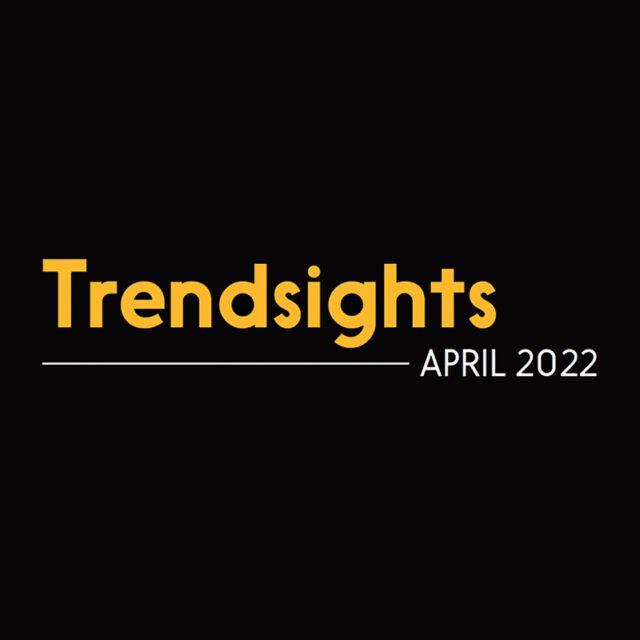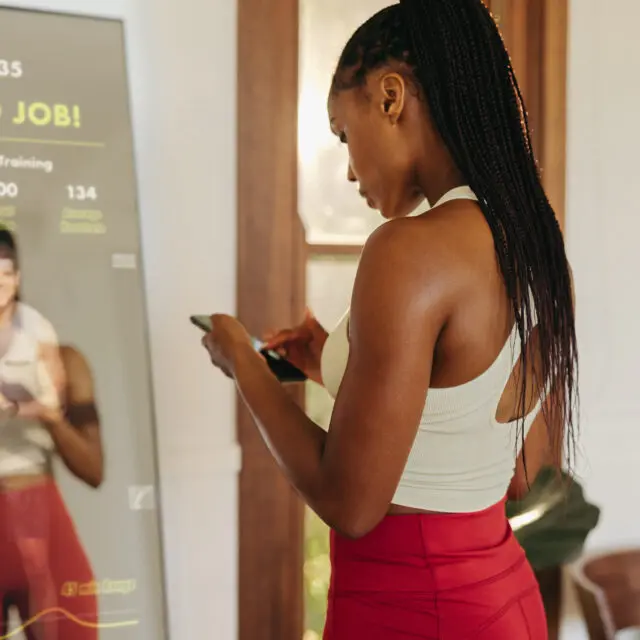Previously envisioned only in popular culture, the virtual and interconnected world of the metaverse now seems to be on our doorstep. Unlike the Internet of today, the metaverse challenges us to build solutions primarily around the experience of something, rather than function-first. Organizations need to think differently, and to go beyond simply digitizing existing physical functions, because the metaverse represents an opportunity to rethink and reshape customer experiences like never before.
For example, remote learning presently tries to replace physical teaching techniques with a mirrored equivalent online: a teacher speaking and guiding a class over video. In the metaverse, remote learning may transport us to the surface of Mars if we are learning about space, or it may simulate real world physics virtually allowing us to practice engineering techniques as if we were constructing something ourselves.
The heightened physical and digital experiences enabled by the metaverse could usher in a new digital age with immense benefits for people, and for organizations.
But this potential has a cloudier side. Could the metaverse widen the digital “gap” where those who have access reap the benefits and those that don’t fall further back? How can we protect people from harmful experiences which could feel more intense in the metaverse? Will it be built with our best interests in mind?
Let’s take a closer look.
Visions of the metaverse
What might the metaverse be like? One helpful approach is to think of it as a combination of interoperable layers, including our physical world, virtual worlds, and an “augmented” reality where our physical world is enhanced with a virtual layer (Pokemon Go being a memorable recent example of this). While it may feel like science fiction now, a cohort of new and unique businesses are expected to establish themselves in the metaverse, existing businesses to migrate there, and individuals to express and monetize their creativity and skills, leading to the generation of new wealth. In this vision, ownership of digital currency and digital assets such as land, goods, brands, and stores will be commonplace.
The metaverse will ultimately be a place where many people shop, play, study, interact, and work

Early signs of metaverse emergence
This is a sweeping vision, but immense investments are pouring in to make it real—PwC predicts that the metaverse ecosystem will be worth over $1.5 trillion USD by 2030. Even today, aspects of the metaverse are becoming visible.
Across six domains, here are some notable examples of its emergence in the here and now.
- Arts & Entertainment: Travis Scott concert in Fortnite in 2020 attracted 27.7 million fans, and generated $20 million USD vs. $60 million USD from 55 physical concerts from 2018-2019.
- Shopping: Fashion brands have enabled purchases of clothing and accessories in online worlds like Roblox & Fortnite, resulting in new revenue streams and connections with customers.
- Social: A substitute for physical interactions and video calls, virtual reality messaging & chat is enabling a deeper level of person-to-person interaction.
- Marketing: Wendy’s set up a “Food Fight” mission in Fortnite and live- steamed it to Twitch resulting in 7,400 new followers and got around 43,500 comments during the game.
- Education: A charter school in Florida intends to establish a tuition- free virtual school in 2022. The school will supply 1300 students with VR headsets to participate in virtual lessons.
- Workplace: Microsoft is currently trialing a new mixed-reality feature enhancement called Mesh to Teams allowing people to share and collaborate in virtual spaces.
Metaverse foundations
Exactly how the metaverse will be built and operated is not yet clear— indeed, predicting today how the metaverse will look in 2032 or 2042 is just as difficult as predicting in 1995 that the “information superhighway” would become the Internet as we know it today. However, we can already see the rough outlines, as key technologies that the metaverse will rely on are rapidly evolving—and in some cases converging—today.

What is Web 3.0?
Coined as the third generation of the Internet as we know it, Web 3.0 will underpin the metaverse—built as it will be on a decentralized structure which encourages interoperable platforms and data ownership leading to privacy, anonymity, and the creator economy.
Issues and considerations with the metaverse
Just as with the rise of the Internet, and the mobile revolution that followed, the metaverse is destined to impact human behaviour and society in ways both beneficial and potentially harmful. The ability to get close to and interact with others in the metaverse, for example, may turn out to be a double-edged sword that can both positively heighten certain experiences and make others worse.
With the current absence of established rules, standards, and protocols, early investors will have an outsized influence on how the metaverse is built and how it operates, by establishing precedents based on their own visions for the technology. What isn’t clear now is whether the interests of these early influencers are aligned with the long-term best interests of people in general.
There’s an opportunity, however, to learn from our previous experiences today and to design something more inclusive and accessible to all. Likewise, establishing positive frameworks to protect people and commerce as the metaverse is built will be essential for healthy, safe, private, and trust-driven experiences.
Let’s look at these opportunities now.
Inclusion in the metaverse
Since resources are not distributed equally, the metaverse could well end up widening a class divide between technological haves and have-nots, a divide that already exists at individual, institutional, and even geopolitical levels. Outcomes may manifest themselves in issues of income, health, and education, resulting in the possible denial of access to resources, markets, and public services.
Some ways to make the metaverse inclusive: design and build it with ease of access in mind and with a relatively low cost of entry. Placing inclusivity at the core of the metaverse’s operating principles will also likely lead to greater adoption, so it is in the industry’s collective best interest to ensure the metaverse is open and welcoming to all.
Health and safety in the metaverse
Virtual reality (VR) can enable many positive experiences, but it can also become disorienting, where users lose the perception of time and become less aware of their physical bodies, leading to anxiety and motion sickness.
Intensity of experiences in the metaverse can also be heightened. Attending a concert by your favourite band with friends may be more fun than normal—but abuse, discrimination, and bullying may be more intensely negative experiences as well.
Governments, regulators, and researchers should study the effects of the metaverse on adults and children. Education as well as new laws and regulations may play important roles in mitigating bad effects and encouraging positive ones.
Trust in the metaverse
As the metaverse develops, expectations are that online marketplaces will likely establish themselves there, connecting billions of users around the world. With a vast range of currencies and cryptocurrencies in use, as well as new forms of digital assets underpinned by NFTs, there would be a clear need for secure, fast, and effortless exchanges. Yet in 2021 alone, overall losses caused by Decentralized Finance (DeFi) scams, theft and exploits have totalled more than $12 billion.
Trusted entities, with proven track records in our current world, have an opportunity to influence and leap frog what we trust them to do today. They should focus on the areas they are experts in and reshape those areas and drive a compelling experience.
Privacy in the metaverse
Building digital ID capabilities and enabling trusted verification will similarly help reduce risks related to proving your identity in the metaverse—a place where bad actors may well be able to mimic your style, personality, and whole identity (known as creating a “deepfake”). How will you prove that you are who you say you are? This will require building new mechanisms for personal data and privacy protection.
The right to remain anonymous will be important in the metaverse, but so will be ensuring that you are not dealing with illegitimate bad actors. Where identity and privacy are concerned, context matters. For example, in the workplace you want to ensure your colleagues are who they say they are. In a social setting, that may not matter.
The future of the metaverse
The Internet did not happen overnight; it required a community of diverse technologies, discoveries, and contributors to make it what it is today. For example, buying online was initially not a trivial task. Payment systems and rails were required to enable this. Likewise, privacy and security systems and techniques needed to be refined, scaled, and strengthened to meet the demands of businesses like banking. The rise of the mobile Internet also seemed to really begin only once the iPhone 3G was released. Internet platforms and systems needed to adjust further to meet mobile demands, as a result.
The metaverse will need time to materialize and evolve, too. There is a long list of challenges that need to be overcome along the way, including in areas of technology, networking, standards, and protocols. People and industries will also need time to shift to new mindsets— something that will be an important key to success.
Will there be a spark that drives adoption of the metaverse, in the same way the iPhone drove adoption of the mobile internet? Who will be the enablers of the metaverse? And will these enablers have our best interests in mind?
If the metaverse is to deliver on its promise to create a productive blend of physical and online experiences, there are questions we must collectively ask. What might the negative effects on human life be? Could technology addiction grow more intense? How will being in the metaverse impact our senses and experiences? Will humanity become more isolated from nature? And lastly, will we have the foresight to prevent the deepening of class divides by building something that is truly inclusive, giving everyone the opportunity and promise of a better tomorrow?
There is much work ahead to answer them.





